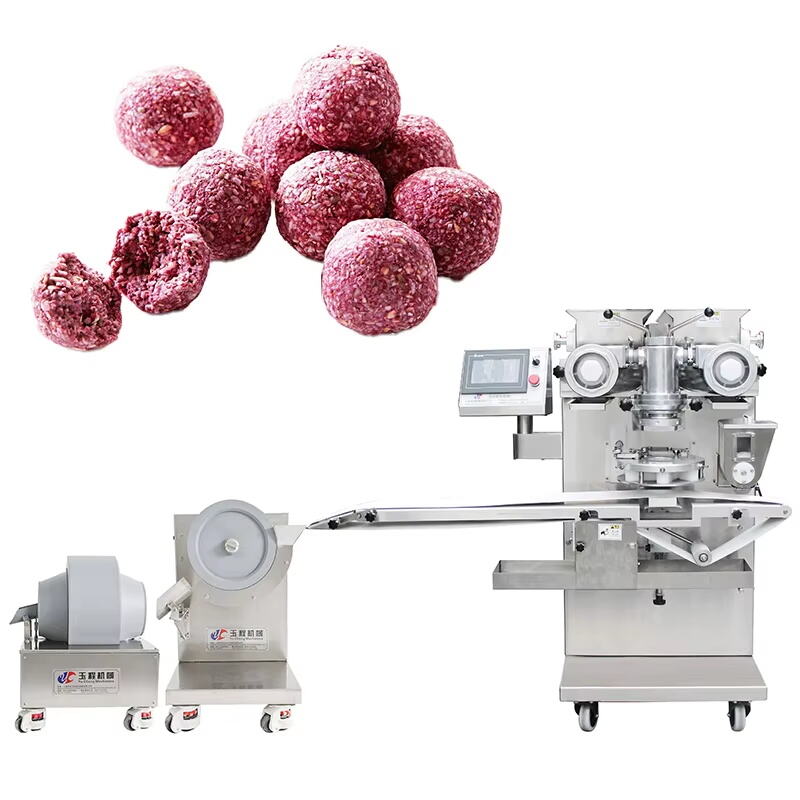Proper care of your fish ball machine ensures it operates efficiently and lasts longer. Regular maintenance prevents breakdowns, improves safety, and keeps hygiene standards high. By cleaning, inspecting, and calibrating the machine, you protect your investment. Commit to these practices to maintain a fish ball machine and enjoy consistent, high-quality results.
How to Maintain a Fish Ball Machine
Cleaning and Sterilizing the Machine
Cleaning your fish ball machine regularly is essential for maintaining hygiene and ensuring smooth operation. Start by disassembling the removable parts. Use warm water and a mild detergent to wash away food residue. A soft brush can help you reach tight spaces. After cleaning, rinse thoroughly to remove soap traces. Sterilize the components using food-safe sanitizers to eliminate bacteria. Let the parts air dry completely before reassembling the machine.
Lubricating Key Components
Lubrication reduces friction and ensures the machine operates efficiently. Identify the moving parts, such as gears and bearings, that require lubrication. Use a food-grade lubricant to avoid contamination. Apply the lubricant sparingly to prevent buildup. Check the manufacturer’s manual for specific instructions. Regular lubrication minimizes wear and tear, extending the life of your machine.
Inspecting for Damage or Wear
Frequent inspections help you spot potential issues early. Examine the machine for cracks, loose screws, or worn-out parts. Pay close attention to the blades and molds, as these components experience the most stress. Replace damaged parts immediately to avoid further complications. Keeping your machine in good repair ensures consistent performance.
Calibrating for Consistent Output
Calibration ensures your fish ball machine produces uniform results. Adjust the settings according to the desired size and shape of the fish balls. Test the machine with a small batch to confirm accuracy. If the output is uneven, recalibrate until you achieve the desired consistency.
Performing Safety and Grounding Checks
Safety checks protect both the operator and the machine. Inspect the power cord and plug for damage. Ensure the machine is properly grounded to prevent electrical hazards. Test the emergency stop button to confirm it works. Address any safety concerns immediately. These precautions create a safer working environment and reduce the risk of accidents.
Troubleshooting Common Issues
Overheating Prevention and Solutions
Overheating can damage your fish ball machine and disrupt production. To prevent this, monitor the machine's temperature during operation. Clean the vents regularly to ensure proper airflow. Dust and debris can block ventilation, causing the machine to overheat. If the machine becomes too hot, turn it off immediately and let it cool down. Check for any obstructions in the motor or fan. Use the manufacturer’s manual to identify overheating causes and solutions.
Fixing Uneven Fish Ball Production
Uneven fish ball sizes can affect product quality. Start by inspecting the molds for damage or residue buildup. Clean the molds thoroughly to remove any blockages. Check the calibration settings to ensure they match the desired output. If the problem persists, examine the feeding mechanism for clogs or misalignment. Testing the machine with a small batch helps confirm the adjustments. Consistent calibration and cleaning ensure uniform fish ball production.
Addressing Unusual Noises
Unusual noises often indicate mechanical issues. Listen for grinding, squeaking, or rattling sounds during operation. These noises may result from loose screws, worn-out parts, or insufficient lubrication. Tighten any loose components and apply food-grade lubricant to moving parts. If the noise continues, inspect the motor and gears for damage. Replacing faulty parts promptly prevents further complications.
Pro Tips for Long-Term Care
Schedule Routine Maintenance
Set up a regular maintenance schedule to keep your fish ball machine in top condition. Create a checklist of tasks, such as cleaning, lubrication, and inspections. Stick to this schedule to prevent small issues from turning into costly repairs. A consistent routine ensures the machine operates efficiently and produces high-quality results. Use a calendar or reminder app to track maintenance dates and avoid missing any tasks.
Use Recommended Tools and Parts
Always use the tools and replacement parts specified by the manufacturer. Generic or incompatible parts can damage the machine or reduce its efficiency. Check the user manual for a list of approved tools and components. Using the right parts ensures the machine performs as intended and extends its lifespan. Keep a stock of essential spare parts to minimize downtime during repairs.
Train Operators on Proper Usage
Proper training for operators is essential to maintain a fish ball machine. Teach them how to use the machine correctly and follow safety protocols. Show them how to clean and inspect the machine after each use. Well-trained operators can identify potential issues early and prevent damage.
Maintaining a fish ball machine ensures efficiency, safety, and cost savings. By following the outlined steps, you protect your investment and extend the machine’s lifespan. Regular care keeps your production consistent and your customers satisfied. Start applying these practices today to maintain a fish ball machine and achieve long-term success in your operations.






